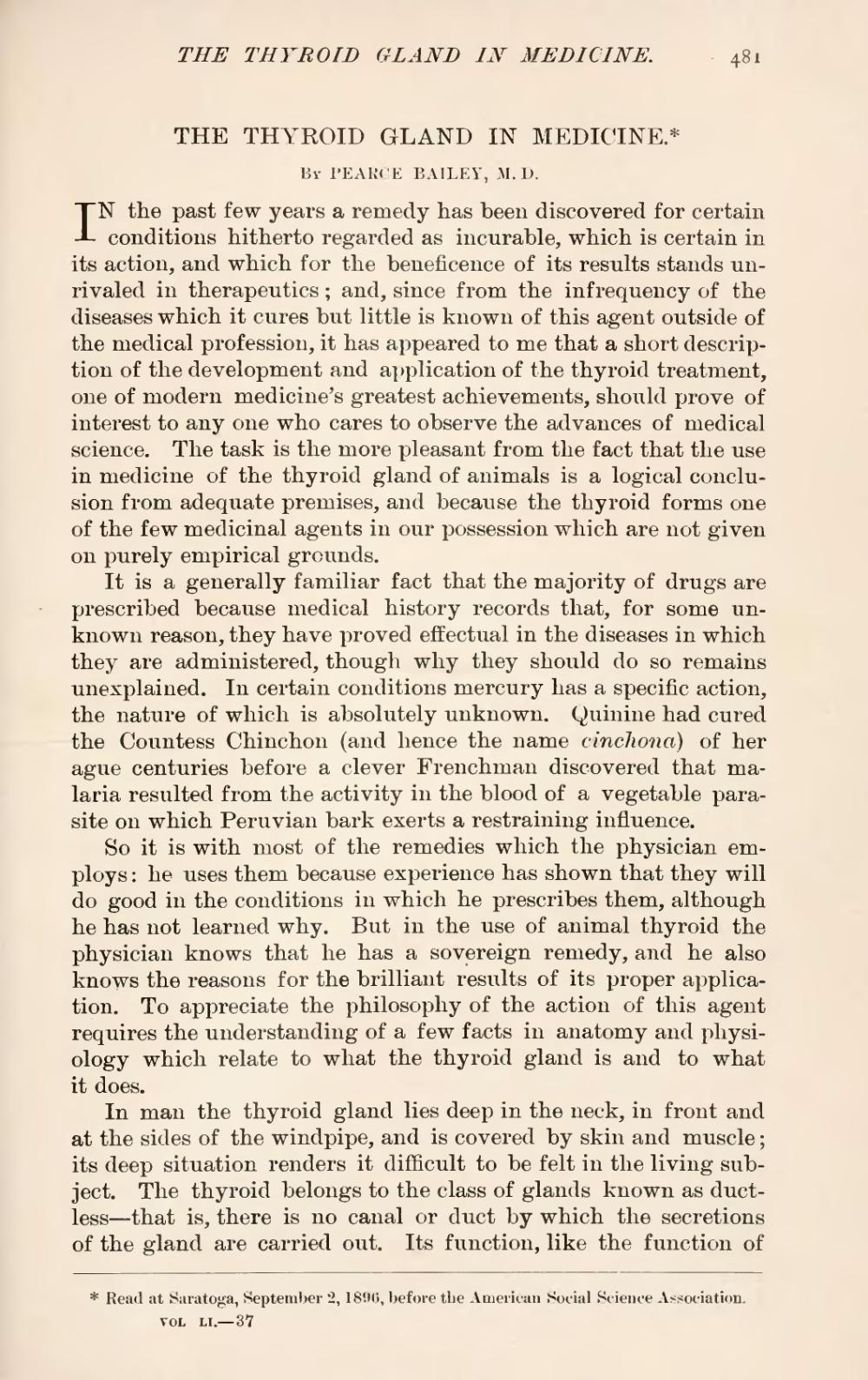| THE THYROID GLAND IN MEDICINE.[1] |
By PEARCE BAILEY M. D.
IN the past few years a remedy has been discovered for certain conditions hitherto regarded as incurable, which is certain in its action, and which for the beneficence of its results stands unrivaled in therapeutics; and, since from the infrequency of the diseases which it cures but little is known of this agent outside of the medical profession, it has appeared to me that a short description of the development and application of the thyroid treatment, one of modern medicine's greatest achievements, should prove of interest to any one who cares to observe the advances of medical science. The task is the more pleasant from the fact that the use in medicine of the thyroid gland of animals is a logical conclusion from adequate premises, and because the thyroid forms one of the few medicinal agents in our possession which are not given on purely empirical grounds.
It is a generally familiar fact that the majority of drugs are prescribed because medical history records that, for some unknown reason, they have proved effectual in the diseases in which they are administered, though why they should do so remains unexplained. In certain conditions mercury has a specific action, the nature of which is absolutely unknown. Quinine had cured the Countess Chinchon (and hence the name cinchona) of her ague centuries before a clever Frenchman discovered that malaria resulted from the activity in the blood of a vegetable parasite on which Peruvian bark exerts a restraining influence.
So it is with most of the remedies which the physician employs: he uses them because experience has shown that they will do good in the conditions in which he prescribes them, although he has not learned why. But in the use of animal thyroid the physician knows that he has a sovereign remedy, and he also knows the reasons for the brilliant results of its proper application. To appreciate the philosophy of the action of this agent requires the understanding of a few facts in anatomy and physiology which relate to what the thyroid gland is and to what it does.
In man the thyroid gland lies deep in the neck, in front and at the sides of the windpipe, and is covered by skin and muscle; its deep situation renders it difficult to be felt in the living subject. The thyroid belongs to the class of glands known as ductless—that is, there is no canal or duct by which the secretions of the gland are carried out. Its function, like the function of
- ↑ Read at Saratoga, September 2, 1896, before the American Social Science Association.
